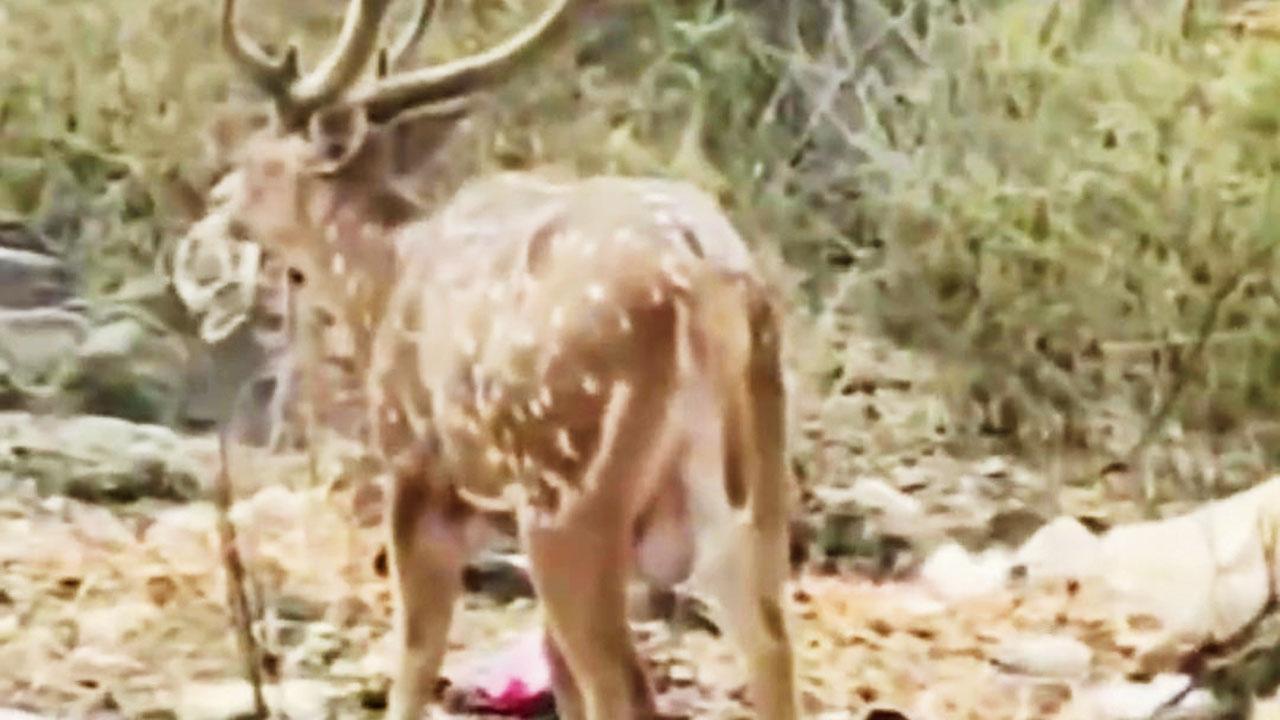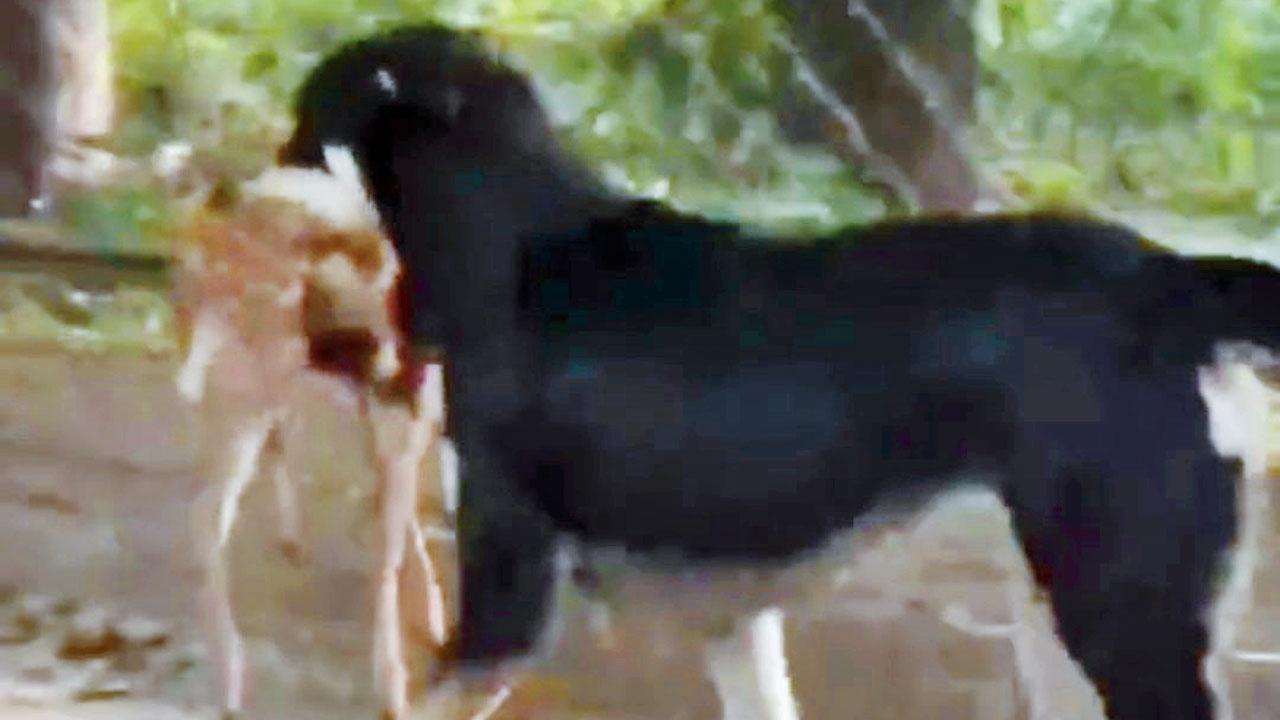Amidst viral video controversy, experts emphasise need for swift action to safeguard wildlife habitat

Deer eating from garbage
Key Highlights
- The issue of stray dogs posing a serious threat to wildlife
- Mukherjee told mid-day that this video is from last month
- In the video that has gone viral, a dog is seen carrying a spotted deer fawn in its mouth
The issue of stray dogs posing a serious threat to wildlife has emerged once again after a viral video from Sanjay Gandhi National Park (SGNP) showed a stray dog holding a spotted deer fawn in its mouth. Green activist Subhajit Mukherjee posted the video on social media. Mukherjee told mid-day that this video is from last month and was forwarded to him by a regular visitor to SGNP.
The issue of stray dogs posing a serious threat to wildlife has emerged once again after a viral video from Sanjay Gandhi National Park (SGNP) showed a stray dog holding a spotted deer fawn in its mouth. Green activist Subhajit Mukherjee posted the video on social media. Mukherjee told mid-day that this video is from last month and was forwarded to him by a regular visitor to SGNP.
Mukherjee said, “It is time for citizens to be responsible for their behaviour of not littering inside the national park because it leads to a chain reaction. The reason for plastic litter in SGNP is by those staying inside the park, including people staying in tribal hamlets. In many places, people just throw the plastic. Many people even feed stray dogs and cats, which needs to be stopped as these stray dogs pose a huge threat to wildlife. BMC should carry out dog sterilisation programs to control the stray dog population.”

Stray dog holding a fawn
In the video that has gone viral, a dog is seen carrying a spotted deer fawn in its mouth. The video also shows some spotted deer gathered at a garbage dump site and eating plastic. Time and again, videos of stray dogs posing a threat to wild animals have been surfacing on the internet from various parts of the country.
The 2022 report on disease prevalence in stray dogs around SGNP emphasises the need to control the feral dog population and implement proper waste management. Following the Animal Birth Control program rigorously can reduce the spread of infectious diseases like Canine distemper, Parvovirus infection, Ehrlichiosis, and Leptospirosis. Vaccinating stray dogs against these diseases, both within and outside protected areas, is crucial. Additionally, focused studies on wildlife-dog interactions and public awareness campaigns are recommended to mitigate the detrimental effects of dogs on wildlife populations, especially endangered species. The report suggests creating policies to exclude free-roaming dogs from critical wildlife habitat.
Honorary wildlife warden of Thane, Pawan Sharma, said that SGNP authorities are already aware of both situations of stray animal infiltration, which is not just restricted to dogs but also cats, pigs, and grazing cattle, which all together put pressure on wildlife inside the park along with the garbage disposal issue and are addressing them with top priority.
“Stray animals will be dealt with scientific and humane methods, and cattle owners will be legally dealt with. Illegal dumping of pets and relocation of strays have been a matter of major concern because of multiple entry exits to the park comprising both legal and illegal. Such entries and exits are usually used to dump, abandon, or relocate pets and strays, which cannot be monitored due to the jurisdiction of multiple authorities. A plastic ban shall soon be imposed and executed by the park authorities along with garbage and edible waste management. I am already in talks with SGNP and following up for a proper protocol and SOP,” Sharma said.
Wildlife conservationist Kedar Gore from The Corbett Foundation said free-ranging dogs have become one of the major threats to wildlife and lack of consistent sterilisation programmes and carelessly thrown garbage have led to an enormous increase in such dog populations around protected areas.
“SGNP has a very high human population around that provides feeding opportunities to dogs at many garbage dumps. People’s compassionate feeding of street dogs too has aggravated this problem. Free-ranging dogs do not naturally occur in the wild and have, therefore, no reason to be a part of wilderness landscapes. Several studies have documented that they are a threat to deer, hare, nilgai, chinkara, and even threatened species such as Great Indian Bustard, and even wolves, jackals, foxes, leopards and tigers. They actively transmit rabies and canine distemper viruses. There is an urgent need to frame appropriate rules and guidelines on mitigating this threat immediately by applying scientifically robust population control measures. Let us not mix wildlife conservation with misplaced compassion,” said Kedar Gore.
2022
Year report on stray dogs around SGNP was submitted
 Subscribe today by clicking the link and stay updated with the latest news!" Click here!
Subscribe today by clicking the link and stay updated with the latest news!" Click here!










